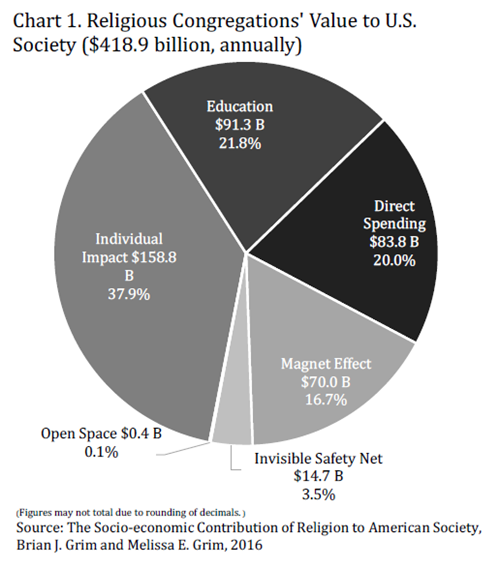Pro-choicers frequently claim that making abortion illegal won’t decrease the number of abortions; it will only decrease the number of safe, legal abortions. They suggest that there is no practical use to restricting abortion legally and that if pro-lifers really cared about decreasing abortion rates, they would focus on decreasing unplanned pregnancies (through better access to contraception, better sex education, etc.)

But there’s a lot of research to show that abortion law affects abortion rates–and not just legal abortion rates, but total abortion rates. Studies often measure the changes in fertility in areas where abortion access recently changed. Secular Pro-Life has compiled a list of such studies if you’re interested.
I’ve now had a few conversations where I point out this reality, and the pro-choice person’s response is to claim that even if abortion restrictions have some nonzero effect on abortion rates, that effect is dwarfed by the decrease in abortions thanks to contraception access. It’s easy for me to believe that both more access to contraception and less access to abortion will decrease abortion rates, and personally I’m for taking both approaches. But the claim that the effect of contraception access trounces the effect of abortion access sounds like just a slightly watered down version of the false claim that abortion access doesn’t affect abortion rates at all. That is, it’s an ad hoc, ill-founded claim to justify our country’s incredibly liberal abortion laws, but the evidence (at least what I’ve seen so far) doesn’t bear it out.
For example, in late 2017 the Daily Mail published “Abortion rate plummets to an historic low, CDC figures reveal.” Specifically the article claims
While the drop mirrors the closure of abortion clinics nationwide, experts say the figure is likely down to more effective use of contraception and the falling pregnancy rate.
The article references this CDC report, which has found a net decrease in the abortion rate (number of abortions per 1,000 women age 15-44) of 22% (from 15.6 to 12.1). This is great news, but it’s not clear from the CDC report the extent to which different factors contributed to the decrease. The CDC authors explain
One factor that might have contributed to this decrease is the increase that occurred during the same period in the use of the most effective forms of reversible contraception, specifically intrauterine devices and hormonal implants, which are as effective as sterilization at preventing unintended pregnancy (102–105). Although use of intrauterine devices and implants has increased in recent years, use of these methods remains low in comparison with use of oral contraceptives and condoms, both of which are less effective at preventing pregnancy (102,104).
So contraception likely played a role, but the CDC can’t quantify it, and they still find that the most effective forms of contraception are not used much compared to the less effective forms. They certainly aren’t asserting that the entire 22% decrease is due solely to contraception access, and their report doesn’t attempt to compare the effects of contraception access to the effects of abortion access.
There are studies that looked at both factors. For example, this Guttmacher report found that between access to the Pill and access to abortion, abortion was associated with a birth rate decrease twice that for the pill.
Among white minors, having had access to the pill was associated with a 9% drop in the overall birthrate and an 8% drop in the rate of nonmarital first births. In this same group, access to an abortion was correlated with a 17% decline in the nonmarital birthrate and a 16% decline in the rate of nonmarital first births.
Another study found that, for women under age 19, “liberalized abortion policy predicts a 34 percent decline in motherhood” whereas “the results do not provide evidence that pill policies had a substantial effect.” The author explains
The birth control pill’s effects on family formation are theoretically ambiguous: The pill was a technological innovation in contraception, but with a failure rate of about 9 percent in the first year of typical use (Trussell, 2004), it still provides an imperfect means of preventing pregnancy. Trends in sexual behavior suggest that any reductions in unintended pregnancies among teens due to safer, pill-protected sex were offset by large increases in sexual activity. Difference-in-difference estimates also provide little evidence to support the view that pill policies had a substantial influence on age at first birth and marriage. Results in Goldin and Katz (2002) and Bailey (2006, 2009) that suggest otherwise are not robust to reasonable perturbations of the authors’ research designs including addressing discrepancies in the legal codings, choosing alternative data sets, and/or adjusting sample selection procedures. Rather, the results robustly point to policies governing abortion, a second, less lauded but more certain means of preventing unwanted births, as the driving force behind delayed family formation in the 1970s. [Emphasiss added]
This study is not a perfect comparison to claims about more modern contraception. The idea is that the most effective forms of contraception (e.g. IUDs instead of the Pill) do a better job of decreasing unintended pregnancy rates because even if users increase their sexual activity as a result, the increase in risk-taking behavior does not offset the decrease in risk these more effective contraceptive methods provide.
Note also that research suggests when abortion is legalized the abortion rate increases more than the birth rate decreases. See Footnote 8 of this report, p8 of the PDF, which explains in part:
Note, however, that the decline in births is far less than the number of abortions, suggesting that the number of conceptions increased substantially –and example of insurance leading to moral hazard. The insurance that abortion provides against unwanted pregnancy induces more sexual conduct or diminished protections against pregnancy in a way that substantially increases the number of pregnancies. [Emphasis added]
People are less cautious about avoiding pregnancy when they know they can get abortions as a back up option. This idea is further substantiated by a study published in the June 2015 edition Perspectives on Sexual and Reproductive Health which concluded:
Women who lived in a state where abortion access was low were more likely than women living in a state with greater access to use highly effective contraceptives rather than no method (relative risk ratio, 1.4). Similarly, women in states characterized by high abortion hostility (i.e., states with four or more types of restrictive policies in place) were more likely to use highly effective methods than were women in states with less hostility (1.3).
This research also suggests that teasing out the effects of abortion access compared to contraception use may prove challenging, since the two appear to be inversely correlated.
So with that brief overview of just a few studies, so far these are the conclusions I’m drawing:
- Abortion restrictions decrease abortion rates (and likely also unintended pregnancy rates).
- Access to the most effective forms of contraception decrease abortion rates.
- Abortion restrictions probably decrease abortion rates more than access to less effective contraception (the pill) does, and
- It’s unclear whether abortion restrictions or access to the most effective forms of contraception decrease abortion rates more.
I’m open to other suggestions/studies if you have them.

 A
A 

 …Imagine that this whole system is going on at the same time that IKEA spends millions of dollars lobbying senators about chair-related issues, and that these same senators vote down a bill preventing IKEA from paying off other companies to stay out of the chair industry. Also, suppose that a bunch of people are dying each year of exhaustion from having to stand up all the time because chairs are too expensive unless you’ve got really good furniture insurance, which is totally a thing and which everybody is legally required to have.
…Imagine that this whole system is going on at the same time that IKEA spends millions of dollars lobbying senators about chair-related issues, and that these same senators vote down a bill preventing IKEA from paying off other companies to stay out of the chair industry. Also, suppose that a bunch of people are dying each year of exhaustion from having to stand up all the time because chairs are too expensive unless you’ve got really good furniture insurance, which is totally a thing and which everybody is legally required to have.

